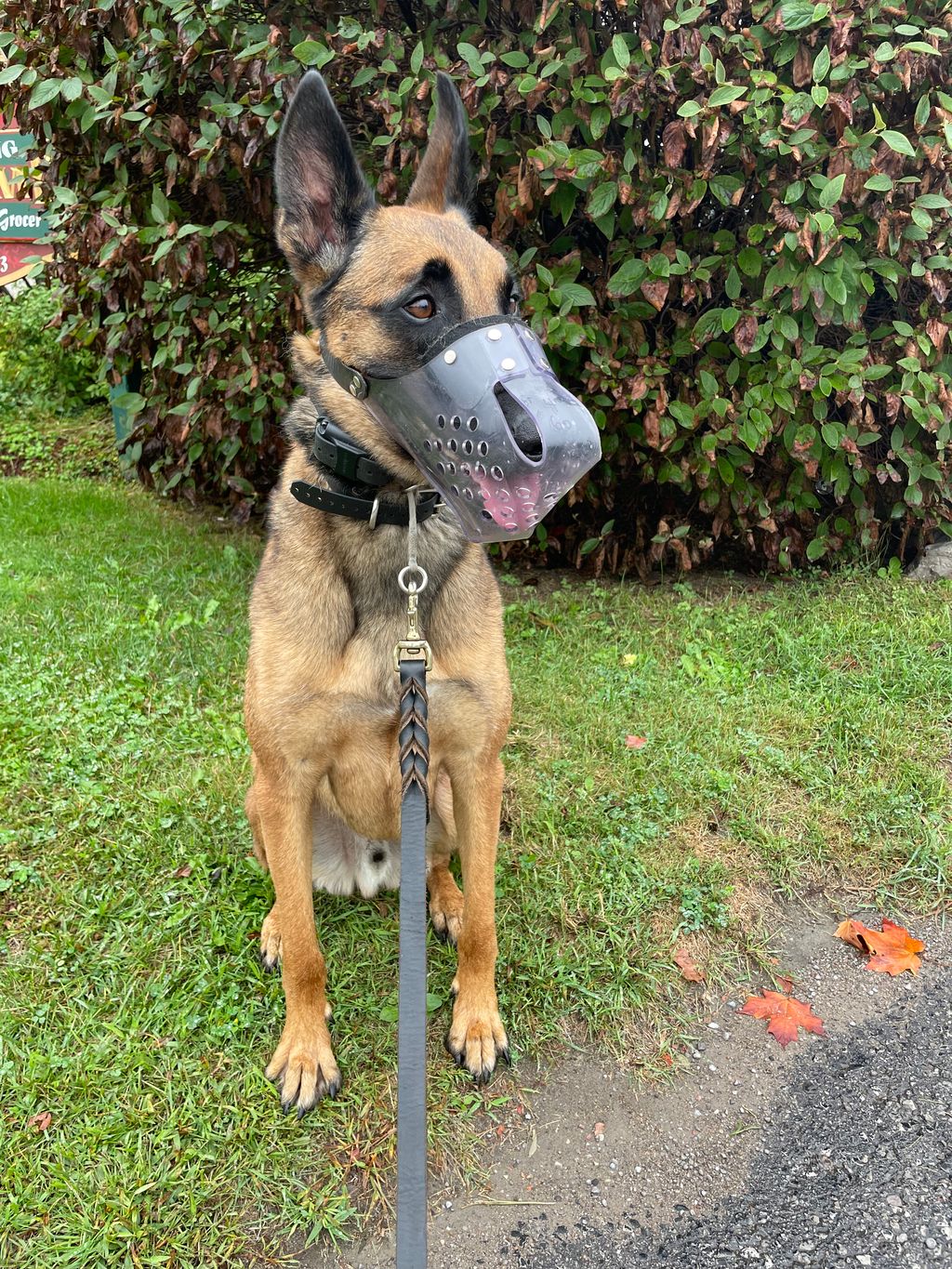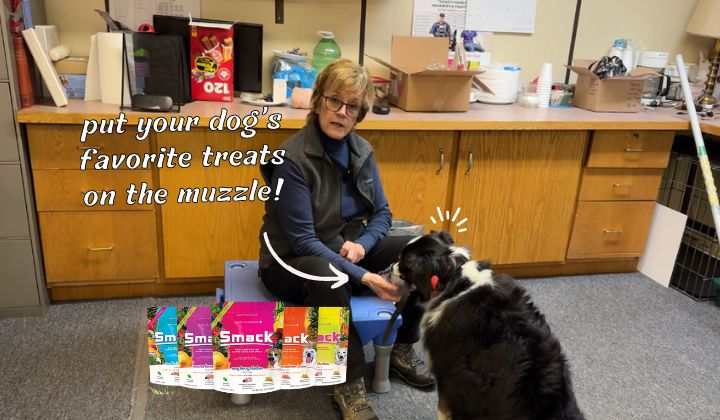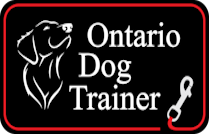Making Muzzle Training Fun for Your Dog
This article will provide a practical, hands-on approach focused on patience, and positive reinforcement so that your dog learns to love the muzzle training process. Muzzles keep dogs and people safe and are not a reflection of a dog’s temperament.
Before we start, here’s a question I always get asked:
How do I get the right measure for my dog’s muzzle?
That’s easy! Your task is to get these measurements below.
-
-
- Length: Measure from nose tip to below the eyes.
-
-
-
- Circumference: Measure around the snout, under the eyes.
-
-
-
- Height: For long-nosed dogs, measure from top of the nose to bottom of the jaw.
-
-
-
- Width: Find the widest part of the snout and measure across.
-
-
-
- Neck: Measure around the neck where the muzzle will sit.
-
Once you’ve got your measurements, choosing the right muzzle size is pretty straightforward. Take the numbers you’ve got for length, circumference, height, width, and neck and check the brand’s sizing chart! Every muzzle brand has its own sizing guide. Now, take these few extra steps below to ensure that your dog will be comfortable for muzzle training.

- Match Your Measurements: Compare your measurements to the brand’s chart. Your dog’s circumference measurement is especially key. This number needs to match up with the brand’s specifications to ensure it isn’t too tight or too loose.
- Add a Little Extra: For the circumference, add about half an inch (or a bit more for larger dogs) to the measurement you got. This extra space makes sure your dog can pant and drink water comfortably. It’s like choosing shoes that have a bit of room so your toes aren’t squished.
- Consider the Purpose: If the muzzle is for vet visits or short durations, closer-fitting might be okay. For longer periods, make sure there’s enough room for panting, drinking, and possibly eating treats.
- When in Doubt, Size Up: If your measurements are between sizes, it’s usually safer to go a size up rather than down. You can often adjust the straps to make the fit more snug, but if it’s too small, your dog will be uncomfortable.
Let’s get started with Muzzle Training!
Preparation: Always start with the right gear. A long line ensures safety and control, particularly for our more adventurous canine companions.
-
- Positive Reinforcement: Keep the energy positive. Use treats, praise, or toys to reward desired behaviours. Remember, “Good stuff happens” when your dog follows commands. This not only encourages your dog but also makes the training session enjoyable for both of you.
- Safety First: Whether it’s setting up a safe training area or ensuring an “escape room” is available for a quick, controlled exit, safety is paramount. This prevents accidents and keeps the training session positive and stress-free.
- Communication and Body Language: Pay close attention to your dog’s body language and respond accordingly. This two-way communication is crucial for effective training and building a strong bond.
- Patience and Consistency: Training is a process. Be patient with your dog and yourself. Consistency is key to reinforcing learned behaviours.
Training time is indeed all the time. It’s about building a relationship based on trust, respect, and mutual understanding. Keep the muzzle training sessions short, positive, and fun. And remember, the journey of training is as rewarding as the outcome.
What should I do if my dog hates wearing a muzzle?
If your dog hates wearing a muzzle, don’t worry—there are strategies you can use to help them become more comfortable. Muzzle training should be a gradual and positive experience, focused on building your dog’s confidence and reducing any negative associations they might have.
Start Slowly! Introduce the muzzle in a non-threatening way. Leave it out where your dog can sniff and investigate it on their own terms. You can even place some treats around and inside the muzzle so your dog starts to associate it with positive experiences.

PHASE 1:
The conditioning starts by feeding all food in the muzzle.
Put part of the dog’s meal allotment in the muzzle and offer it to the dog. If the dog refuses, the restaurant closes until next meal time.
Repeat for each meal until the dog is diving into the muzzle.
PHASE 2:
Once your dog is comfortable diving into the muzzle to eat, the next step is to do up the strap around the dog’s head and then immediately undo it before the dog resists.
Repeat until the dog is comfortable wearing the muzzle for a few minutes.
PHASE 3:
Once your dog will readily accept wearing the muzzle for 60 seconds, with the strap buckled up and without scratching to get it off, you are ready to move to the next step – walking together.
Attach a leash to your dog’s training collar and go for a short walk with your dog wearing the muzzle. All meals are still happening from the muzzle.
PHASE 4:
Repeat PHASE 3 by gradually extending the time and distance your dog must wear the muzzle. The muzzle becomes the food bowl until eating from and wearing the muzzle is a non-issue. Any refusal to feed from the muzzle instantly closes the restaurant until the next meal time.
If you feed your dog in their muzzle and they wear the muzzle each time you go for a walk, your dog will soon learn to associate wearing a muzzle with good things and they will dive into it each time you present the opportunity.
What Are the Best Treats for Muzzle Training?
The right treats can make all the difference in muzzle training. You’ll want to choose something that is not only tasty but also easy for your dog to eat while wearing the muzzle. High-value treats that your dog really loves will make the process smoother and more enjoyable.
One brand I personally use and recommend is Smack Pet Food. Their treats are made from high-quality, raw ingredients, which dogs find irresistible. Here are a few reasons why Smack treats are ideal for muzzle training:
- Size and Texture: Smack treats are small enough to fit through the gaps of most muzzles, making them perfect for training sessions. Their texture is just right for quick chewing, ensuring that your dog doesn’t get frustrated while trying to eat them.
- Nutritional Value: Smack treats are not just tasty—they’re also packed with nutrients. This means you can reward your dog without compromising their diet, even during frequent training sessions.
- Variety of Flavors: With flavors that appeal to different tastes, you can keep things exciting for your dog. Whether it’s chicken, fish, or other proteins, there’s a Smack treat that will make your dog eager to cooperate during muzzle training.
Incorporating Smack treats into your muzzle training routine can help turn what might seem like a chore into a fun and rewarding experience for your dog.
Related: My dog’s favorite raw treats for training, SMACK!
Where can I order a dog muzzle?
When it comes to ordering a dog muzzle, there are several reputable sources you can consider. One popular option (which I personally use) is Jafco Muzzles, known for their high-quality products. You can check their website for sizing guides to ensure you get the perfect fit for your dog.
Here are a few other places where you can order dog muzzles:
- Amazon: They offer a wide variety of muzzles with customer reviews and ratings to help you make an informed decision. You can find options ranging from soft fabric muzzles to sturdy basket muzzles.
- Chewy: This online pet retailer has a great selection of muzzles and provides detailed product descriptions and customer feedback. Chewy also offers fast shipping and excellent customer service.
- Petco: If you prefer to see the muzzle in person before buying, Petco is a good option. They have both online and in-store options, and their staff can help you choose the right size and type.
- PetSmart: Similar to Petco, PetSmart offers both in-store and online shopping. They carry a variety of brands and styles to suit different needs and preferences.
Related: The Essential Guide to Muzzling Your Dog
How Long Can My Dog Wear His Muzzle?
When it comes to muzzle training, one of the most common questions is: “How long can my dog wear his muzzle?” The answer varies depending on the type of muzzle, the dog’s comfort level, and the specific circumstances.
For short periods, such as vet visits or during specific training sessions, a dog can safely wear a well-fitted muzzle for around 30 minutes to an hour. However, it’s crucial to monitor your dog for any signs of discomfort, stress, or overheating, especially during warmer weather or in stressful situations.
If your dog is wearing a basket muzzle, which allows for more ventilation and the ability to drink water and pant, they can generally wear it for longer periods—up to an hour or more during walks or outings. But again, regular breaks are essential, especially if your dog is not yet fully accustomed to wearing the muzzle for extended periods.
Important tips during muzzle training:
- Always start with short, positive sessions, gradually increasing the duration as your dog becomes more comfortable.
- Never leave your dog unattended while muzzled, especially if they are still in the training phase.
- Ensure your dog can pant, drink, and eat treats comfortably while wearing the muzzle.
Muzzle training should always be a gradual process focused on your dog’s comfort and safety. Remember, the goal is to create positive associations with the muzzle, making it a non-issue for both you and your dog.
Why is Muzzle Training Important?
It is a proactive way to ensure the well-being of your dog and those around them. It’s a simple step that can make a big difference in a variety of situations, providing peace of mind and enhancing your dog’s quality of life. By taking the time to train your dog properly, you’re setting them up for success in a world where their safety and comfort are top priorities.
Need Dog Training Help?
Please fill out my assessment form. Whether it’s online or face-to-face, let’s get your dog’s behaviour sorted.
Need Immediate Help with Your Dog? Book an Online Coaching Session with Me Today!
Click here to schedule your session and get expert guidance tailored to your needs. Don’t wait—your path to a better relationship with your dog starts now! Learn More about the Coaching Hub for Pet Owners.
Are you a Dog Trainer Looking to Grow Your Dog Training Business?
Book a free call with me. We’ll talk strategy, not magic, to boost your dog training business.
Get Daily Dog Training Advice

